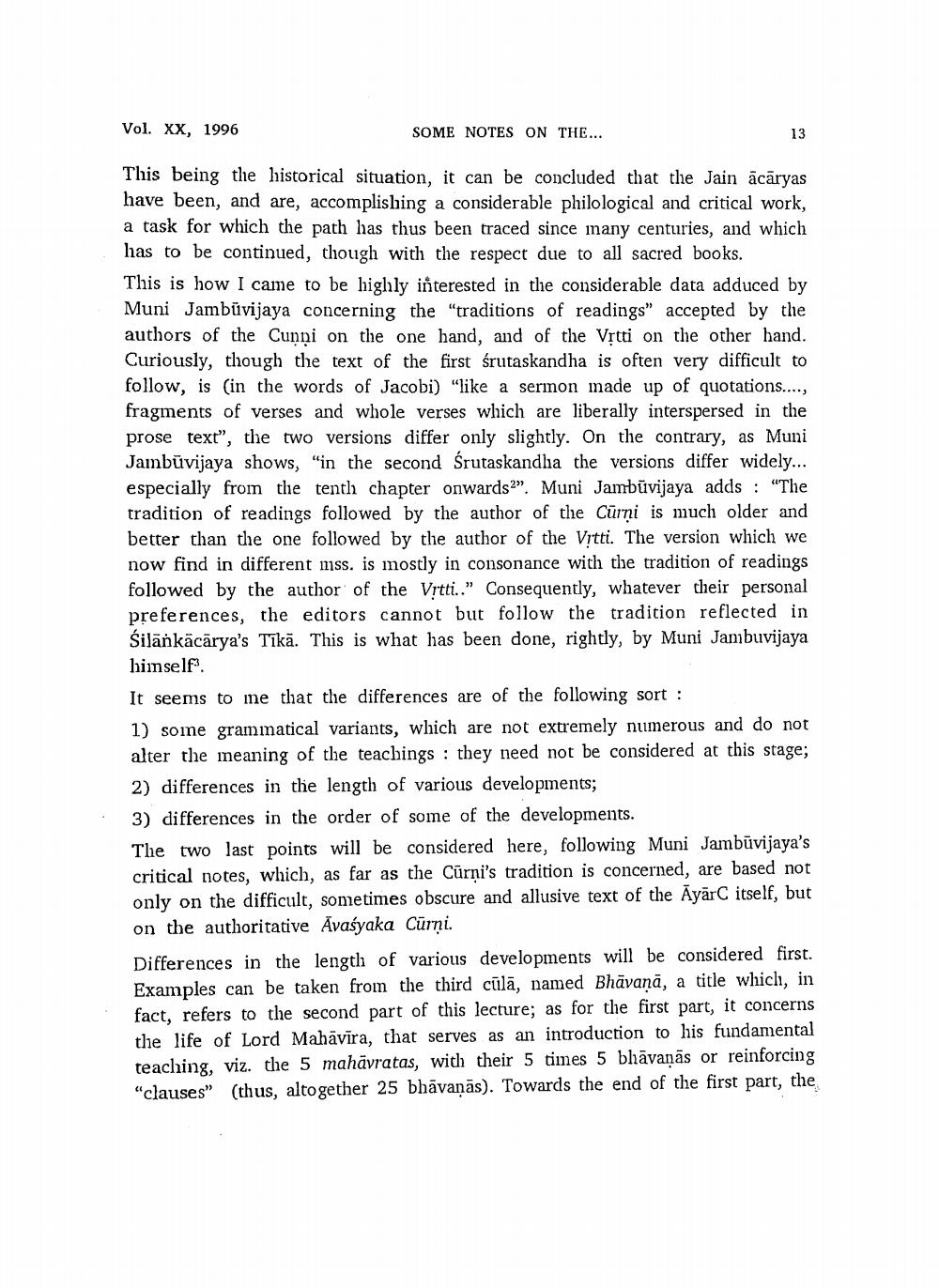________________
Vol. XX, 1996
SOME NOTES ON THE...
This being the historical situation, it can be concluded that the Jain ācāryas have been, and are, accomplishing a considerable philological and critical work, a task for which the path has thus been traced since many centuries, and which has to be continued, though with the respect due to all sacred books.
This is how I came to be highly interested in the considerable data adduced by Muni Jambūvijaya concerning the "traditions of readings" accepted by the authors of the Cunni on the one hand, and of the Vịtti on the other hand. Curiously, though the text of the first śrutaskandha is often very difficult to follow, is in the words of Jacobi) "like a sermon made up of quotations...., fragments of verses and whole verses which are liberally interspersed in the prose text”, the two versions differ only slightly. On the contrary, as Muni Jambūvijaya shows, "in the second śrutaskandha the versions differ widely... especially from the tenth chapter onwards2" Muni Jambūvijaya adds: “The tradition of readings followed by the author of the Cūrņi is much older and better than the one followed by the author of the Vitti. The version which we now find in different mss. is mostly in consonance with the tradition of readings followed by the author of the Vrtti.." Consequently, whatever their personal preferences, the editors cannot but follow the tradition reflected in Silānkācārya's Tīkā. This is what has been done, rightly, by Muni Jambuvijaya himself It seems to me that the differences are of the following sort : 1) some grammatical variants, which are not extremely numerous and do not alter the meaning of the teachings : they need not be considered at this stage; 2) differences in the length of various developments; 3) differences in the order of some of the developments. The two last points will be considered here, following Muni Jambūvijaya's critical notes, which, as far as the Cūrņi's tradition is concerned, are based not only on the difficult, sometimes obscure and allusive text of the ĀyarC itself, but on the authoritative Ávaśyaka Cūrņi. Differences in the length of various developments will be considered first. Examples can be taken from the third cūlā, named Bhāvanā, a title which, in fact, refers to the second part of this lecture; as for the first part, it concerns the life of Lord Mahāvīra, that serves as an introduction to his fundamental teaching, viz. the 5 mahāvratas, with their 5 times 5 bhāvanās or reinforcing “clauses” (thus, altogether 25 bhāvanās). Towards the end of the first part, the




